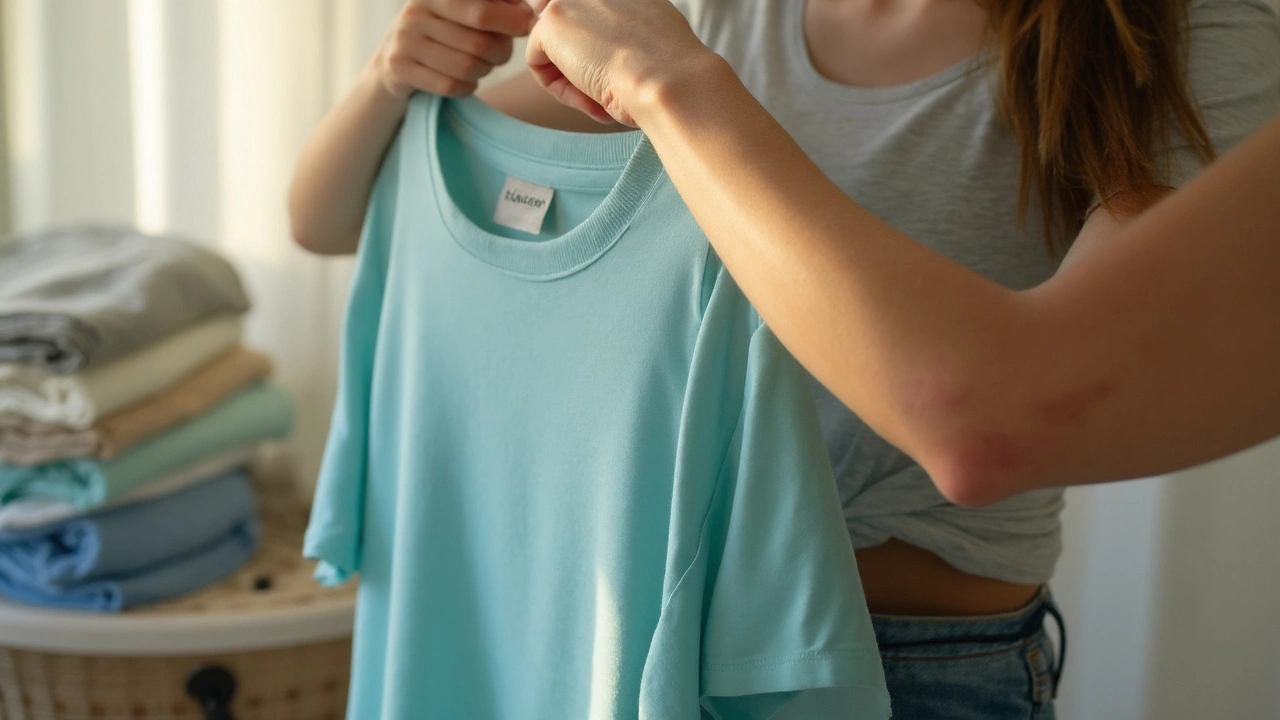Why Some Fabrics Irritate Your Skin and How to Avoid Them
Ever notice an itchy rash after buying a new shirt? Chances are the fabric itself is the troublemaker. Certain fibers can trap sweat, create static, or simply be too rough for sensitive skin. The good news? You can spot the problem before you pay and switch to softer options that keep you comfortable all day.
Common Fabrics That Cause Irritation
Most people react to synthetic blends like polyester, nylon, and acrylic. These materials don’t breathe well, so they hold moisture next to your skin. That moisture becomes a breeding ground for irritation, especially if you sweat a lot or have a condition like eczema. Wool is another big offender – while it’s warm, its coarse fibers can rub and cause a red, itchy patch.
Even natural fibers can be problematic. Some people find cotton that’s been heavily dyed or treated with chemicals to be itchy. The chemicals used in finishing processes (like formaldehyde resins) can linger in the fabric and trigger a reaction. If you’ve never had an issue with plain cotton but notice a problem with a bright tee, the dye could be the culprit.
How to Choose Fabrics That Stay Gentle
Look for labels that say “hypoallergenic,” “organic cotton,” or “modal.” Modal is a type of rayon made from beech trees; it’s smooth, breathable, and less likely to cause a rash. Bamboo fabric works similarly – it feels soft, wicks moisture, and is naturally antimicrobial.
When you’re shopping, give the material a quick rub. If it feels scratchy or stiff, it’s probably going to irritate. Also, check the weave: a tighter weave means fewer spaces for sweat to collect. For sleepwear, opt for lightweight, natural fibers like bamboo or high‑quality cotton with a thread count of at least 200.
Don’t forget about laundry. Harsh detergents can leave residues that irritate skin. Use a mild, fragrance‑free detergent and rinse twice if possible. Adding a cup of white vinegar to the rinse cycle helps break down any lingering chemicals.
Finally, test new clothing before you wear it all day. Wear the item for an hour at home and see if any itching or redness appears. If it’s fine, you’re good to go; if not, return it and pick something softer.
By learning which fabrics tend to cause irritation and following these simple shopping and care tips, you can build a wardrobe that feels as good as it looks. Say goodbye to itchy tags and hello to comfort every time you get dressed.
-
24
Learn which fabrics trigger contact dermatitis, why they irritate, and how to choose safe, breathable alternatives for healthier skin.
Categories
Tags Weight
- online pharmacy
- side effects
- dietary supplement
- dosage
- online pharmacy safety
- drug interactions
- health benefits
- allergy relief
- autoimmune disease
- antibiotic
- pharmacy reviews
- affordable antidepressant
- gut health
- safe online meds
- prevention
- patient safety
- NSAIDs
- drug interaction
- medication safety
- blood thinners

